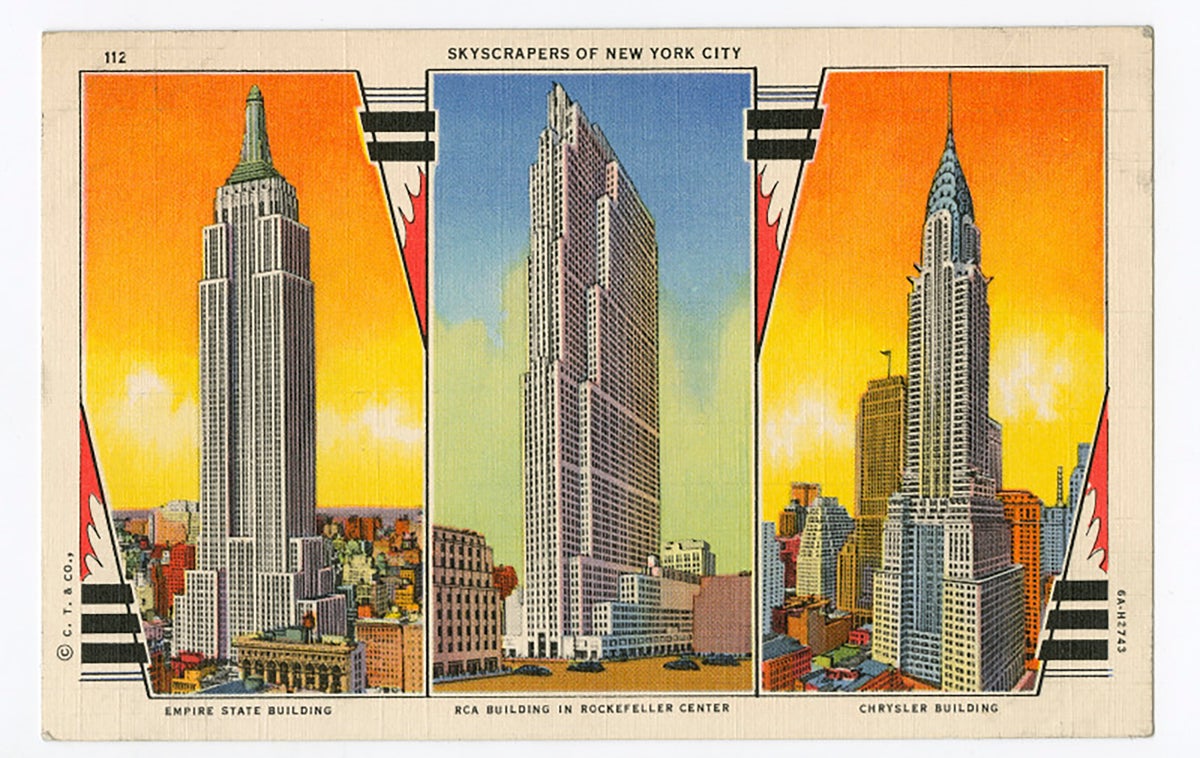
A century after it was formally introduced at the 1925 International Exhibition of Modern Decorative and Industrial Arts, in Paris, Art Deco is enjoying a resurgence in decor, fashion and more. A new generation is appreciating the style's unapologetically glamorous roots and translating it into something new.
A current exhibition at the Museum of the City of New York provides a look at the style that helped define the city in the popular imagination a century ago, in landmarks like the Chrysler Building, the Empire State Building, Rockefeller Center and Radio City Music Hall. “Art Deco City: New York Postcards from the Leonard A. Lauder Collection” also showcases ephemera, clothing and film clips from the era.
And in London, the Victoria and Albert Museum has a collection of day and evening outfits, jewelry, textiles and costumes from Les Ballets Russes that were a big influence on fashion.
A signature style of the early 20th century
“Ask three historians to define the term Art Deco, and you’ll likely get three varying answers,” design writer Arricca Elin Sansone said last year in a story for Elle Décor. “Art Deco is many different things to different people, and its evolution is as unique as its expression in architecture, interior design, decorative arts and fashion.”
Emerging after World War I, the original Art Deco era embodied a spirit of creativity, freedom and innovation. With modernity and exuberance on full display, the 1920s and early ’30s became one of the most design-influential periods in history.
Those early 1930s saw the blooming of the style in Miami, too, where South Beach’s Art Deco District is a draw for visitors and a hub for design.
And in Paris, organizers of the 2024 Olympics created Art Deco posters last year to celebrate the games and mark the centennial since the 1924 Olympics, which Paris also hosted. They said the vivid posters were meant to celebrate the style’s colorful and flamboyant influence on the city’s landscape.
In cities around the world during that era, squat urban landscapes morphed into canyons of soaring skyscrapers. Public and private spaces embraced geometric motifs, luxurious materials and an urbane appeal. In transportation, faster cars and sleeker trains hinted at a dynamic new age, while the jazz-fueled nightclub scene brought people out to celebrate.
Flapper fashion
That same energy infused the shift from restrictive corsets to sensuous, liberated silhouettes. It was the bee’s knees, the cat’s pajamas, the Roaring Twenties. Flapper style reflected changing roles for women in society, says design blogger Courtney Price.
On today's runways and red carpets, shimmering gold-and-black satin gowns evoke Jazz Age sparkle, often adorned with crystals and feathers. Celebrities like Zendaya, Gigi Hadid, Beyoncé and Demi Lovato have embraced bobs and finger waves, channeling the allure of the Deco era in fresh ways.
“The aesthetic of the 1920s is enjoying a fashionable renaissance,” says Kirsty Thatcher of the Australian fashion magazine Russh. “Drop-waist dresses, sleek bobs and layers of pearls dominate runways and street style alike.”
Giorgio Armani evoked the period in this year’s fall couture display in Paris with pearls, velvets, silk chiffons, sequins and more. The models were accompanied by nostalgic jazz music as they walked. Chanel and Dior’s F/W ’24 collections also gave a nod, with elongated boyish silhouettes, tweed and cinched waists, feathers, pleats and slinky slip dresses.
Decor Notes
“The boldness and elegance of Art Deco are what appeals to me,” says New York-based interior designer Vanessa DeLeon, a frequent presence on HGTV and Bravo.
In her interiors, deep hues like emerald and ebony meet gleaming metallic accents and stylized prints. DeLeon’s latest lighting collection pays homage to Deco’s signature frosted glass and polished metal fixtures.
Jamie Watkins and Tom Kennedy of the London design house Divine Savages infuse their collections with cheeky nods to Deco’s architectural drama. Their “Deco Martini” print marries a classic fan motif with a swanky cocktail glass, conjuring visions of Jay Gatsby’s parties. “Gershwing” layers luscious feather shapes into a decadent statement piece.
“Art Deco was synonymous with glamour and luxury,” says Watkins. “It’s no wonder we’re drawn to it again.”
Designer and lifestyles maven Athena Calderone, in collaboration with Crate & Barrel, invokes cinematic Art Deco silhouettes with alabaster sconces, curvilinear club chairs and geometric-patterned furnishings. The vibe is Manhattan, Paris and Duke Ellington.
Insta, in Paper Form
For true Deco devotees, that exhibition at the Museum of the City of New York’s exhibition is a must-see.
Co-curator Lynda Klich notes that postcards were the social media of their day, with travelers busily scribbling messages to friends and family. The city's now-iconic Deco buildings feature prominently in over 250 postcards, plus a selection of 1920s-era gowns, shoes and accessories.
“More than an aesthetic, Art Deco was the look that sold the city to the world,” says curator Lilly Tuttle.
The exhibition runs thru Feb. 15.
___
New York-based writer Kim Cook covers design and decor topics regularly for The AP. Follow her on Instagram at @kimcookhome.
For more AP Lifestyles stories, go to https://apnews.com/lifestyle







